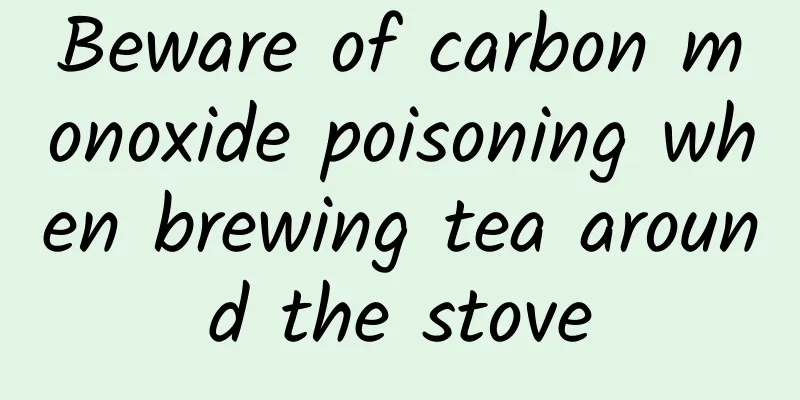In hot weather, beware of this type of severe heatstroke - heat stroke

|
Author: Wang Meng, attending physician, Xuanwu Hospital, Capital Medical University Reviewer: Wang Changyuan, Chief Physician, Xuanwu Hospital, Capital Medical University As the global climate warms, summer temperatures are also rising year by year. Under such weather conditions, more and more patients with heat stroke are being treated in emergency departments, including patients with severe heat stroke, namely heat stroke. As we all know, heat stroke usually occurs in hot weather and in an environment with high humidity. The main manifestations are a large loss of water and electrolytes, sweat gland dysfunction and central temperature regulation disorders. According to the clinical manifestations and the severity of the disease, heat stroke can be divided into premonitory heat stroke, mild heat stroke and severe heat stroke. Severe heat stroke is mainly divided into three types: heat cramps, heat exhaustion and heat stroke. Mild heat stroke is not terrible, but heat stroke is a serious disease that can be fatal, with a mortality rate of up to 20% to 70%. We should pay enough attention to it. Figure 1 Copyright image, no permission to reprint 1. Characteristics of different types of heat stroke (1) Premonitory heatstroke and mild heatstroke: Premonitory heatstroke is mainly manifested by dizziness, headache, dry mouth, sweating, palpitations, fatigue, etc. The body temperature of patients with premonitory heatstroke is usually normal or slightly elevated. At this time, if the patient is promptly transferred to a cool and ventilated place to rest and the patient is given adequate water and electrolytes, the patient can recover in a short time. Most of the heatstroke cases we see in daily life are premonitory heatstroke. However, if premonitory heatstroke is not treated promptly and effectively, it may progress to mild heatstroke. The body temperature of patients with mild heatstroke may be as high as 38°C or above, accompanied by heavy sweating, flushed face, etc. In severe cases, there may even be symptoms of dehydration such as wet and cold skin on the limbs, low blood pressure, and rapid pulse. If mild heatstroke is treated promptly and effectively, such as transferring the patient to a cool and ventilated place, blowing a fan, spraying cool water, etc., the patient can also recover within a few hours. (2) Heat cramps: It is a type of severe heat stroke, usually occurring after excessive physical labor or exercise in a hot environment. Patients often become thirsty due to excessive sweating and drink a lot of water. Although the water is adequately replenished, the sodium chloride concentration in the blood decreases due to insufficient electrolyte replenishment, causing muscle cramps in the limbs, most commonly gastrocnemius cramps in the lower limbs. However, it should be noted that the body temperature of patients with heat cramps is mostly normal. (3) Heat exhaustion: Patients with heat exhaustion may experience chest tightness, cold sweats, weak pulse, low blood pressure, etc., and may also be accompanied by syncope, mild fever, etc. Heat exhaustion can be an intermediate development process between heat cramps and heat stroke. If heat exhaustion is not effectively treated, it may develop into heat stroke. (4) Heat stroke: The typical manifestations of heat stroke are high fever (body temperature is usually >40°C) and impaired consciousness. Depending on whether there is an exercise factor when heat stroke occurs, it can be divided into non-exertional heat stroke and exertional heat stroke. The occurrence of non-exertional heat stroke is closely related to the body's exposure to a hot environment and insufficient heat dissipation. It is more common in people with poor body temperature regulation ability, including the elderly and disabled, infants and young children, and those who have been weak. Exertional heat stroke is mainly caused by the accumulation of a large amount of heat due to skeletal muscle contraction after activity and exercise, which cannot be dissipated in a short period of time. It often occurs in people who were previously healthy, mainly including outdoor workers, athletes, etc. Most patients develop the disease when doing heavy physical labor or strenuous sports in high temperature, high humidity and windless weather. Figure 2 Copyright image, no permission to reprint 2. Pathogenesis of heat stroke The main cause of heat stroke is the imbalance between heat production and heat dissipation after the human body is exposed to a hot environment and/or strenuous physical activity, which leads to the accumulation of heat in the body, but the heat cannot be effectively dissipated, causing the body temperature to rise. In the initial stage of the temperature rise, the human body can increase heat dissipation by regulating the breathing rate through the body temperature regulation center. However, as the disease progresses, the body heat accumulates further, the body temperature regulation center loses its regulatory function, and the body temperature will rise rapidly to more than 40°C, causing the body's cell membrane stability to lose stability, mitochondrial dysfunction, etc. Heat stroke usually has an acute onset and progresses rapidly, with prominent clinical manifestations such as a sharp increase in core body temperature, central nervous system dysfunction, and multiple organ failure. 3. Diagnostic criteria for heat stroke The diagnostic criteria for heat stroke in China are that the patient is first exposed to a hot environment or has a history of high-intensity exercise. On this basis, any one of the following clinical manifestations is met: ① Central nervous system damage; ② Core body temperature > 40°C; ③ Multiple organ damage; ④ Severe coagulation dysfunction. Finally, other diseases are excluded to make a clear diagnosis. 4. Treatment of heat stroke (1) First of all, the patient must be removed from the high temperature environment in time, and external physical cooling should be performed at the same time. Simply put, the patient should be transferred to a cool and ventilated environment, and the patient's clothes should be taken off to promote heat dissipation. For patients who do not have circulatory failure (such as decreased blood pressure, arrhythmia, cardiac arrest, etc.), cold water baths and other methods can be used to cool down. For patients with circulatory failure, evaporative heat dissipation can be used to cool down, such as using electric fans to blow air, transferring patients to air-conditioned rooms, etc., and ice packs can be placed in the patient's groin and armpits. If conditions permit, ice blankets can also be used to cool down. At the same time, for patients who have already fainted, care should be taken to protect the patient's airway from being blocked to prevent the patient from suffocating due to vomitus blocking the airway. Figure 3 Copyright image, no permission to reprint (2) After initial emergency treatment, the patient must be rushed to the hospital for medical treatment. For patients who are ineffective with external physical cooling, 4°C ice saline can be directly infused, and hemodialysis or peritoneal dialysis can also be used to reduce the temperature. The hospital can also use drugs to cool the patient, and chlorpromazine is often used. For patients with respiratory disorders, ventilator treatment should be used when necessary, while maintaining the patient's water and electrolyte balance to prevent and treat organ failure such as heart, liver, and kidney. 5. Prevention of heat stroke Heat stroke is a very serious disease, and preventing it usually requires multiple approaches. (1) Avoid high temperature environments: Try to minimize exposure time in environments with high temperature and humidity and no ventilation. In particular, avoid extensive outdoor activities or work during the hottest time of the day (11 a.m. to 4 p.m.). (2) Timely and adequate replenishment of water and electrolytes: You should drink water in a timely manner and avoid drinking water only when you are thirsty. It is usually recommended to drink 200 to 300 ml of water per hour. Electrolyte water can also be chosen. (3) When going out, take precautions against the sun and ensure heat dissipation: When going out in hot weather, you can apply sunscreen on exposed skin and wear a sun hat, sunglasses, etc. to reduce the damage of ultraviolet rays to the skin. However, do not wear clothes that are too tight or poorly breathable to prevent poor heat dissipation in the body. (4) Reasonable arrangement of rest and work time: Prolonged exposure to high temperature should be avoided, and rest and work time should be reasonably arranged. For example, sanitation workers can do cleaning work in the early morning or evening to avoid high temperature periods. (5) Dietary prevention: In summer, the diet should be light and you should eat more fresh vegetables and fruits to increase the body's fluid capacity, thereby preventing excessive water loss. (6) Prevention for key groups: such as children and disabled elderly people. Disabled elderly people should be prevented from staying in unventilated, stuffy rooms for a long time, and children should be prevented from staying alone in closed, unventilated environments such as cars. Heat stroke is the most serious type of heat stroke. Once you experience high fever, headache, nausea, vomiting, or even impaired consciousness, you should seek medical treatment as soon as possible. Although heat stroke is serious, it is still preventable and treatable. As long as we enhance our understanding of heat stroke and respond scientifically, we can save our own lives and the lives of our relatives and friends at critical moments. |
<<: How much do you know about stocks? Don’t mess around with folk remedies
>>: Most parents are doing it wrong when it comes to cleaning their children's ears
Recommend
What harm does curettage cause to the human body?
In today's life, many women may have experien...
Natural pregnancy rate for women aged 43
Many women have a desire to be a mother, and thei...
There is a faint gray mark on the early pregnancy test paper
Generally speaking, when pregnant women find that...
Mycoplasma pneumoniae is coming in full force, what can we do?
Hello, this is Science Popularization China. Rece...
What to do if you have heavy bleeding during abortion
As we all know, society is becoming more and more...
Muscle building training plan for girls
Girls are relatively petite, and women's phys...
What is the process of obstetrics and gynecology delivery?
Giving birth to a baby is a relatively natural th...
An 18-year-old boy had a papaya-sized tumor "hidden" in his abdomen. Doctors defuse the crisis with their skillful hands
Xiaojie, an 18-year-old boy from Changsha, discov...
Dieting to prevent menstruation from coming back
Losing weight is what everyone is most concerned ...
Methods of weaning off breast milk: Vitamin B6
For newborn babies, mother's milk is undoubte...
One breast hurts while the other doesn't
Women attach great importance to their breasts, a...
What is the difference between telecom fiber and broadband? How to measure the speed of telecom fiber broadband?
Home broadband generally uses ordinary network ca...
What kind of tea can women drink to cure constipation
Many conditions will occur in the body of a pregn...
How long will the contractions last after giving birth to the second child?
After giving birth to the second child, what wome...









